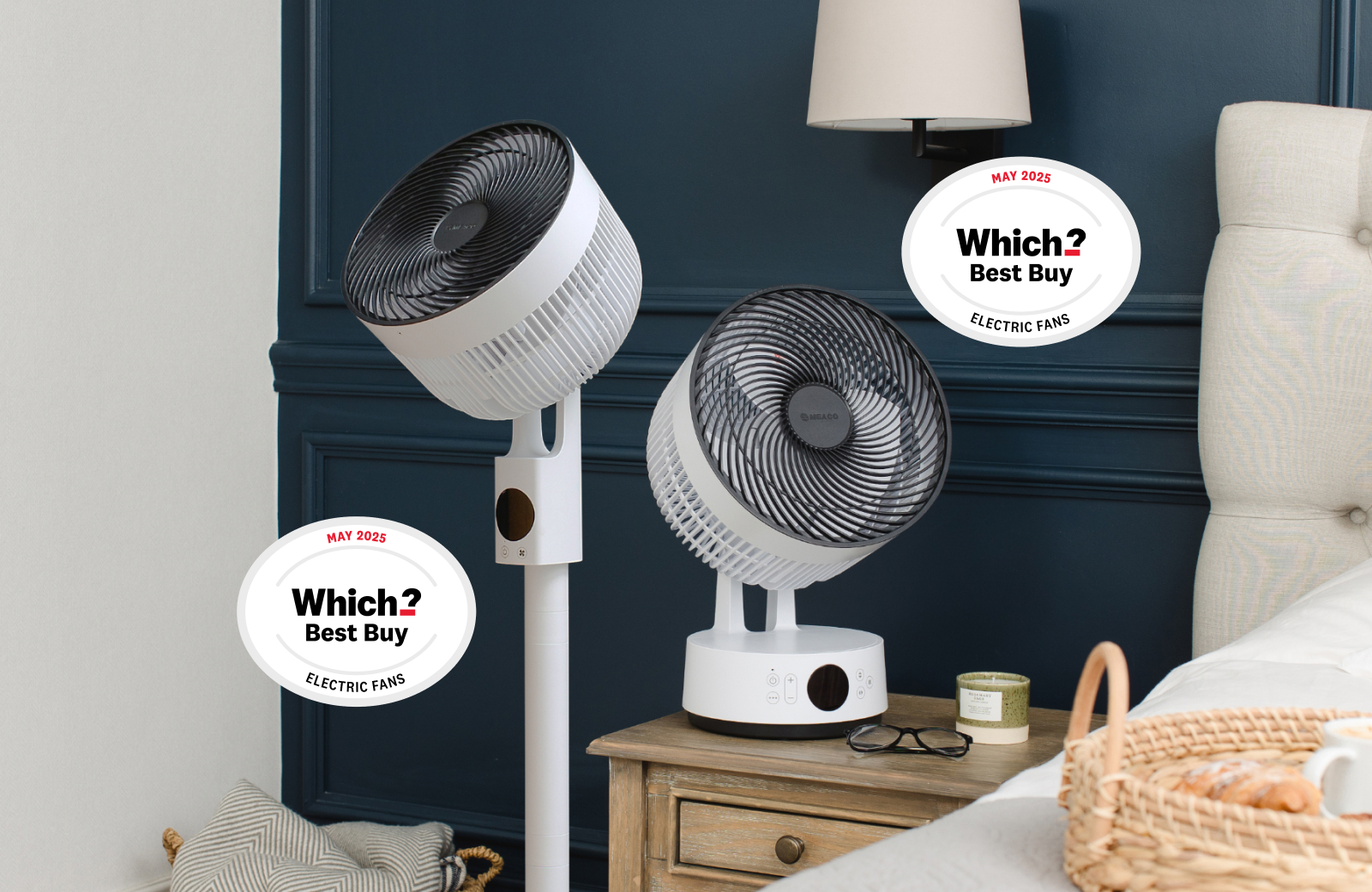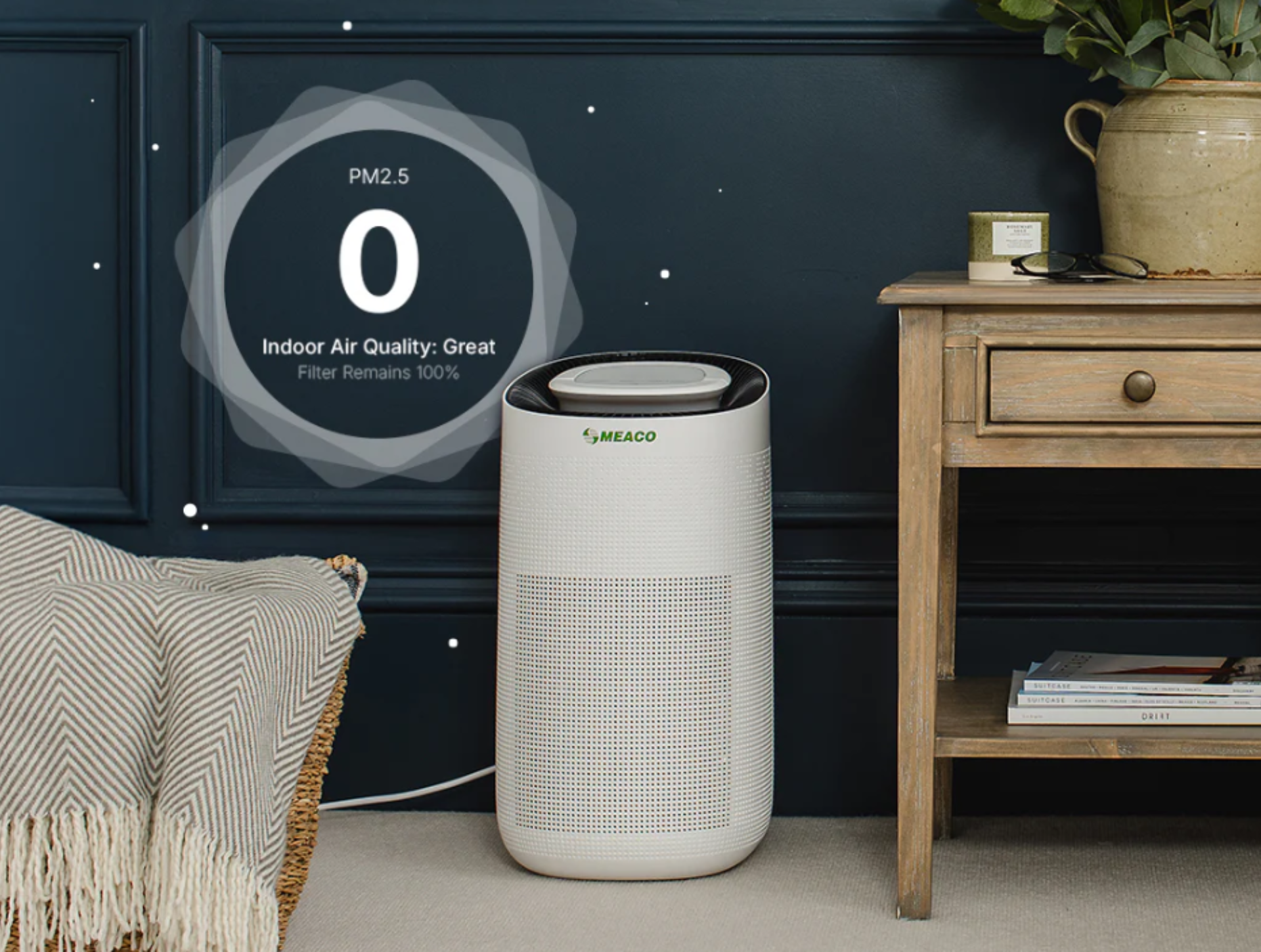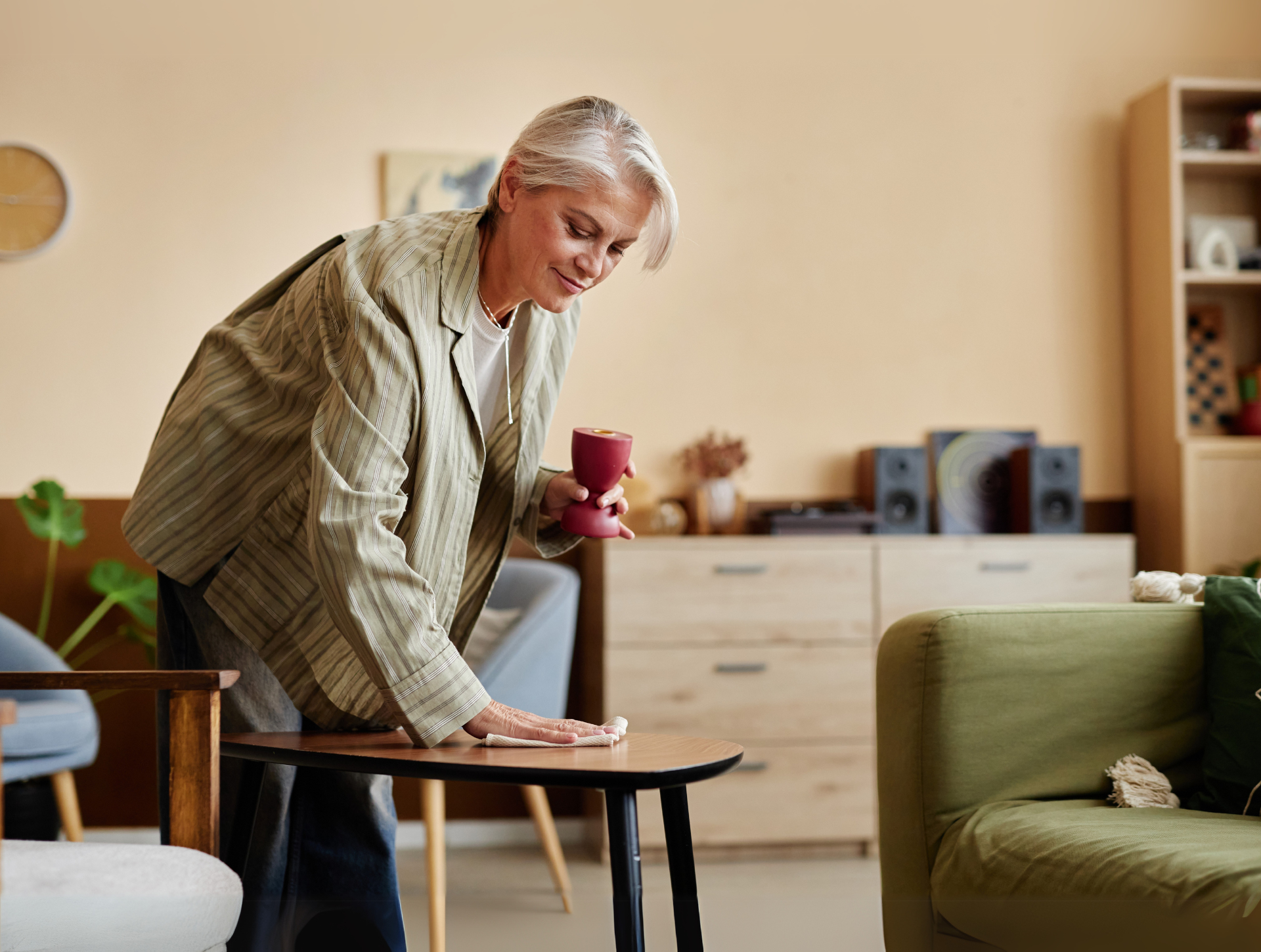One of the most common questions we get on the telephone involves those customers who have bought some type of relative humidity meter and are using it to check on the dehumidifier’s performance. The perceived disparity between the performance of the dehumidifier and the readings on the meter then raise one of two questions. “Why is it still running” or “Why is it not running?”
A dehumidifier has a humidistat which means that it should run until it gets to the target relative humidity and then it should stop dehumidifying and only turn itself back on when the relative humidity goes back up.
This would be the same as a thermostat on a radiator turning the radiator off and on as the temperature goes up and down.
So customers quite rightly have it in their head that their dehumidifier will turn off and on at some point.
Measuring relative humidity is not as simple as measuring temperature.
Measuring relative humidity has never been as simple as measuring temperature, for as long as I can remember it has been quite straight forward, for not a huge amount of money, to measure temperature to within 0.5°C or better and for the thermometer to remain stable for several years.
Relative humidity sensors on the other hand tend to struggle to measure to much better than plus or minus 5%rh in the first place and are susceptible to drift over time. There a couple of points there to be taken on board before we go any further. Firstly why do I write about plus or minus a percentage? When you look at a reading on a relative humidity meter it might say 45%rh, but this does not mean that it is 45%rh, it means that if the meters accuracy is +/-5%rh then the relative humidity is somewhere between 40 and 50%rh. So to understand what a meter is telling us we need to know its accuracy which will always be stated as +/- a number.
I also mentioned drift; this is best understood if you think about your watch. You will accept that your watch might be a bit fast or a bit slow, this would relate to its accuracy. But over time does your watch lose 3 minutes a year, or maybe gains 10 minutes a year? This movement and potential lose of accuracy every year is its drift, something that relative humidity meters suffer from.
When the relative humidity meter leaves the factory it will be set up to read accurately within it’s specification but over time it will drift away from this, usually at a rate of 2-5%rh per year. Manufacturers will expect users to either calibrate their humidity yearly (calibration means to reset the device against a trusted standard, but like setting your watch against the speaking clock) or replace them every few years. But if we are honest with ourselves domestic users will do neither.
So now we have a combination of accuracy and the band that this creates and drift over time, you can start to see now why measuring relative humidity has been described as a black art!
To be honest unless you have paid under around £70.00 for your humidity meter then you probably have something that is cheap and cheerful and at best is just a wet and dry guide. When I talk about £70.00 I mean for the humidity meter alone and not one of these weather stations that are quite popular these days. To compound the problem most meters below this price will have an accuracy of +/-5%rh in the mid range moving to +/- 7%rh below 30%rh and above 70%rh, all of which increases our margin of error when we look at the screen.
That is the meter dealt with, next we have its environment.
We call these measurements relative humidity because they are relative in this case to temperature. If you are measuring the relative humidity in a room at 22°C and 50%rh and forgetting the influence of a dehumidifier or any other outside interference from a humidifier or humans etc if the temperature drops to 21°C then the relative humidity will rise to 53%rh on it’s own. If we were at the extremes of relative humidity at the top or bottom of the scale then the relative humidity would move by 5 or 7%rh with every movement of 1°C. The movement is always inverse, as temperature increases then relative humidity falls and so on.
This is why it is important not to put your humidity meter, or your dehumidifier for that matter, in front of a heat source like a radiator or a window. So if you have your humidity meter on one side of the room and your dehumidifier on the other side of the room then they could be reading different humidities just because of where they are. Add in factors like drafts, humans beings close by (we give off heat and moisture, trying blowing on your humidity meter and see what happens), moisture from sinks, bathrooms, drying laundry etc and you can see that there are several factors that can influence a relative humidity reading.
You could put the humidity meter above the dehumidifier but that is a bad idea too. The air coming out of the dehumidifier is warm and dry, especially on desiccant dehumidifiers, and this too would give a false reading. The air above a dehumidifier like the Meaco DD8L for example is about 10°C warmer than room temperature and very dry, so anything in its air flow will read the wrong reading.
Speed of reaction is another problem, the dehumidifier has its fan drawing air across it sensor to help it measure the latest room reading and spot fluctuations, the humidity meter does not benefit from this and might be suffering from a lack of airflow over its sensor. It might also be quite slow to react or only measure in steps of 5%rh. Trying blowing over the sensor, how quickly does it react and how long does it take it to settle back down. If you run it through this cycle a few times does it settle back down to the original reading?
How does a dehumidifier actually measure the room conditions?
So how does the dehumidifier measure the room conditions? Dehumidifiers have small electronic sensors behind the filter where the air comes into the dehumidifier from the room. This is the best and most sensible place for them to sample the air. Quite deliberately dehumidifiers do not try and be any more accurate than +/-5%rh because they do not want to be turning themselves on and off too frequently if the relative humidity is hovering around the target relative humidity. Avoiding this sort of on/off/on/off control makes the dehumidifier last longer.
As long as the filter is kept clean then the dehumidifier will give you a reliable room reading.
So now we have to add in the accuracy of the dehumidifier, whether the filter is clean, the accuracy of the humidity meter, the drift over time of the two different sensors, their relative positions and the relative conditions within the room.
So as I say to customers when they call, it is not such a straight forward answer to what seems like a simple question!
Products featured: Dehumidifier








62 responses
i’ve been told that the reason i have condensation on my windows in the winter is because of high humidity so i just bought a couple portable dehumidifiers. I’ve noticed that the one that is located in the same room as my thermostat is causing the room to warm which in turn doesn’t allow for the furnace to kick on causing the rest of the house to be cold. If i do the obvious and move it elsewhere i have the condensation if i leave it i get a false thermostat reading. Any advice?
Sal,
If you place the dehumidifier central in the house and leave the internal doors open then the moisture in the house will come to the dehumidifier and the house will dry out. The room is probably warming up because I guess you have the room closed, it is also an indication that the dehumidifier is too large for that air volume.
You could put the dehumidifier somewhere central and leave the internal doors open and be patient for the results to start to show. Or use a smaller dehumidifier in that room, or turn the thermostat up higher to compensate for the heat of the dehumidifier.
Hope this helps.
regards
Chris
Hi Chris,
We are running a factory in India Calcutta and we pack powder product which requires RH @NMT 40% and temp 22 to 25 deg centg. During Sept the RH outside is @80% . But when we are trying to run the dehumidifier in the sealed room with tiled walls and with one door and 5 workmen working, the RH is not falling down to 40%. It is constant at 55 to 58% in day time and 45% RH in night time.. Where as in Jan and Feb this machine in this room keeps RH at 40%. Fully clueless as to how to solve the problem. Plz advice.
The extra moisture load will be coming from the workmen and you need a larger dehumidifier to bring the relative humidity down to your target.
Nice article…bought 3 hygrometers in Hong Kong….Analog ones and all 3 were almost in sync with my Canadian digital ones….happily brought them to Toronto after 4 weeks, and, blimey, all 3 gone berserk…..
Right now after 3 months the 2 digital ones read 47% and 43% and the Hong Kong ones read 60%, 65% and 70%???? Any ideas?
This is the problem with relative humidity and if we are honest without something to calibrate them against you have no way of knowing which one is correct. If the analogue ones are based on a hair membrane then they are very prone to shock and will have lost their accuracy in transit. In museums they calibrate that type every time they move them.
Went to about 4 sites/articles and did not find the information I was looking for until I found your article. What a great article, Chris! And the comments/responses have been equally informative.
We recently added on master bedroom and bathroom and put the new area on its own hvac unit. The humidity was registering in the room at the 70 percentile range. The contractor decided that the unit is likely oversized for the area and the addition is a tight build. We added a whole house dehumidifier and have it putting the dehumidified air back into the space thru a single supply boot. The dehumidifier was set in the 40 percentile range but we never got below 55 on our inexpensive reader- and the temperature seemed to rise significantly in the bedroom due to the hot air coming in and thus giving a late temperature differential into the bathroom. We recently left town and set the hvac to 79 degrees and had someone check the reading in the room while we were gone- down to 42%. Within hours of our return and setting the hvac to 68 degrees, the humidity climbed back to 55%. Shouldn’t the dehumidifier regulate the humidity regardless of the temperature in the room? And shouldn’t the hvac when running continue to lower the humidity, not raise it?
Jill,
You will have an increase in relative humidity if you drop the room temperature because of the inverse relationship between temperature and relative humidity. As temperature drops, relative humidity increases. The full effect of this will be reduced slightly by the moisture that the air conditioning is removing from the air.
When the space was new it would have been carrying a lot of moisture if you had any plastering done and the level of relative humidity in the space will be affected by how many people are in the space and how effective any ventilation in the bathroom is. This is why the reading is lower when you are not there because there is less moisture being put into the air.
Of course we then have the accuracy and calibration of the humidity meter to worry about as well.
Hope this helps a little.
Chris
Greetings,
I am an Archivist at a University in state of Louisiana. I have been battling humidity issues for the past 2 years and have not been able to solve them. I currently have 4 dehumidifiers running in my archives and the rh still hovers around 60% up as high as 70% in some areas of my space as you very well know this is extremely far from ideal and can damage our materials. My space is a very large in the shape of a square with a a whole in the middle for the elevator shaft and mechanical. Think of a square doughnut. As I mentioned some of my rooms hover around 60 % (reading room and main exhibit galleries) while some areas are hovering around 70% rh (work rooms and back storage areas). My most important areas are the areas in which I cannot get any control. I also have two large fans that are helping to circulate the air, but it does not seem to be helping with the humidity. We have an old a/c unit that constantly runs and maintains the temperature at around 70 degrees Fahrenheit, and to the best of my knowledge and observation is not pulling out any humidity. If you do not know Louisiana is a state in which it gets very humid in the summer’s with temperatures getting into the hundreds and humidity levels being at 100%. I have spoken with my maintenance staff and have gotten few answers and am at my wits’ end about what can be done. Any assistance and guidance would be greatly appreciated. I look forward to your response.
Nolan,
Thank you for your email, it is a difficult situation.
First question to ask is where is the water coming from? I know that it seems obvious that it is the weather but if it is then why is it coming in?
Are people bringing it in on damp clothing?
Is there an air handling system bringing fresh air in?
Are entrance doors left open?
Are there any plumbing leaks?
Yes to any of the above then they should be easy fixes.
Next can you reduce the air volume that you need to control? Can the collection be housed in sealed spaces within the large space using display cases or glass panels to make spaces smaller and easier to dehumidify?
Another thing to question are the humidity readings. How can you be sure that the readings are that high? Have the instruments that you are quoting been calibrated on a yearly basis? Are they providing you with data on a continuous basis or are these just random spot readings? Calibration of a humidity meter is vital, especially at high temperature and relative humidities and also worth questioning.
As an aside the air conditioner will be removing water from the air otherwise it cannot cool, in these applications air conditioner cooling is your friend.
Finally i would go to the biggest and best state library in Louisiana and ask them how they cope and what ideas they have, archives are always happy to share.
Good luck.
regards
Chris
Thank you Chris for the explanation!!!
Unfortunately your products are not available in my country as it seems.
So I imagine it would tourn on only the fan to do the readings each half hour, right?
So is there any reason to not mount the sensor for example on top of the unit, so externally?
You are correct, with ours the fan would only turn on once every 30 minutes to check the relative humidity. You are better off having the sensor in the airflow because it provides a more accurate room reading thanks to the sampling of the air from within the room.
Hello, I understand what you say in the article. But what about the dehumidifier kickin on continuously even after a few minutes after reaching the target RH? As you say, the sensor is placed where the filter is, and near the condenser….this! When the unit stops, the humid condenser affects the sensor readings that now doesn’t have any air flowing in and keeping it dry and accurate, so it quickly rise the RH perceived level and the humidifier kicks in, the airflow dries the sensor, it quickly reaches the desired level and shuts of.. and the cycle continues. What about this? It seems to me free wear and tear and costly for the bill. Wouldn’t be better moving the sensor outside the unit? Thank you in advance.
Dylan,
Thank you for your questions. On a Meaco dehumidifier we will run the dehumidifier to a few percentage points below the target relative humidity to take into account the accuracy of the sensor and to ensure that the relative humidity is stable below the set target. The dehumidifier then goes into sleep mode for 30 minutes and ignore the relative humidity readings it sees because it knows it’s fan is turned off and the readings without the fan are not relevant.
So we understand the issue and we have designed it out using our unique Meaco Control Logic.
Chris
Hi, I bought a Meaco DD8L and it works very well BUT….
First of all, I have a small detached house (1930’s) it gets very cold in winter even when the heating is on, it can feel very uncomfortable due to the low temperature. Also, I can’t afford to have the heating on 24/7 and the house has a noticecable damp atmosphere from Autumn through to Spring. I bought a humidity sensor last week and the reading it gave was 79%. The dehumidifier within a few hours had (according to this sensor) brought the rh down to around 55% which I was quite impressed with. However, due to the scale of the problem, to be fully effective, I need to move the dehumidifier around various rooms as leaving it in one place doesn’t fully dry the house out. My house is single skin brick and I think the double glazing is around 10 years old – I don’t see any standard kite marks on the glass and I doubt it is as efficient as would be ideal. In other words, my house does not retain heat and it is not an easy problem to fix. I keep my windows shut during the colder months and put the extractor on when cooking etc. But even with the dehumidifier on all day, if I switch it off for an hour or two, the rh soon shoots back up to 75% so it seems like my house is a sponge!
I’m sure you will advisel me that I need my dehumidifier on 24/7 which is what I would like to do but I am worried about cost. If I leave it on the ‘thumbs up’ setting with double fan symbol, can you give me an idea of how much this would cost per hour ? Thanks in advance.
John,
Some thoughts spring to mind. How long have you had your dehumidifier and how long has it been running this Autumn so far.
With regards to the relative humidity shooting back up there are only two reasons why this would happen. Either the temperature has fallen in the space or the moisture content of the air has increase (ie water has been added to the air). Which do you think is most likely?
With the house having a low level of insulation on both the walls and the windows you are always going to be more prone to condensation and mould and you will have to maintain a lower level of relative humidity in order to avoid this. This because the outer surfaces of the walls will have a lower surface temperature than they would have if they had cavity wall insulation and newer double glazing.
With regards to cost in single fan speed it will draw about 350 watts maximum and in fan speed two you are looking at 650 watts. If you call your electricity supplier they will be able to give you an idea of costings. Remember that the dehumidifier has two other benefits as well as drying the air. The wattage is delivered to the space as heat, a good thing at this time of year and the dier air makes it easier for you to heat the air with your central heating and reduces your overall heating costs.
Hope this all helps, let me know how you get on.
Chris
Thank you for your reply, yes that does help. I first ran the dehumidifier this Autumn around a month ago (early October) but have resisted keeping it on all the time. I understand your point about moist air being harder to heat and costing more fuel.
My house is extremely cold in the winter and on very cold days remains cold even with the heating on! From what you’ve told me, I don’t think running the dehumidifier all the time would be too costly and it will make my house easier to heat so I will give it a go.
John,
That defintely makes sense, please do come back and let us know how you get on.
Good luck.
Chris
So, how long will it take until a 20L Meaco is decalibrated and thus no longer reliable with its readings? This is concerning to know. How can one calibrate it in the future, if at all?
Our humidity sensors are designed to maintain their reliability for more years than you will be using the dehumidifier. I am not sure that other manufacturers do this.
So which one is likely more accurate? If my dehumidifier is saying 55% humidity but my humidity meter reads 38% which one should I trust? Should I turn my dehumidifier up from 45% to 50% because its getting too dry?
Michelle,
probably the sensor in your dehumidifier is more accurate to be honest, especially if it is relatively new. Unless you spent more than £80.00 on your humidity meter then it will only be acting as a guide to the general level of dampness in the property. You also have to remember that when the meter says 38% what it is saying is that the relative humidity is somewhere between 33% and 43%rh (plus or minus 5%rh accuracy).
Further information on this topic can be found here – http://www.meaco.com/blog/?p=685
regards
Chris